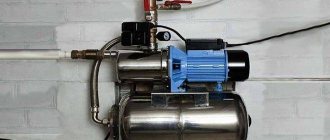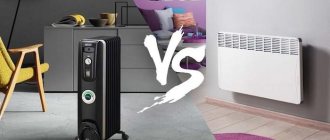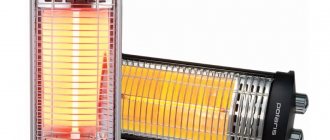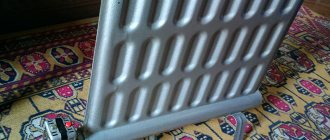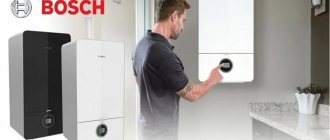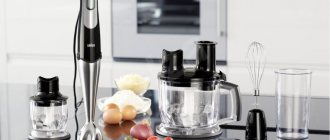Do you have your own home and want to understand how to heat it most expediently, economically and safely? Most often, to solve these problems, the option with electricity is chosen. However, choice is a complex process, so when organizing a system, you often have to consider many options. The most common of them:
- Turn out the oven. But this involves a lot of related worries (firewood, cleaning the chimney, etc.).
- Gas heating. It is environmentally friendly, convenient, there are almost no associated worries, but in order to supply gas to the house, it is necessary to make a project to supply gas to the house, which will entail large costs.
- Heating systems operating on flammable substances. It is necessary to purchase fuel and periodically clean the fires. Difficulty can also arise if you do not live in the house all the time, but only in the spring and autumn. Controlling heating in winter becomes problematic.
- There is only one thing left - heating a country house with electricity. Electric convectors are environmentally friendly, very simple and there are no associated worries. In addition, there are systems available for remote control of heaters.
Advantages of using electric convectors for heating a home
Convector heating of a house is not only the simplest, but also the most cost-effective option.
With this type of room heating, there is no need to spend money on purchasing additional equipment or paying for the work of specialists to install a complex system. The convector does not require either pipe laying or installation and adjustment of the heating boiler - you just need to attach it to the installation site using special parts. Using a convector to heat a private house, it is also possible to almost completely eliminate heat loss, which is impossible when using a heating boiler or pipes. This is achieved due to the fact that in an electric convector all heating elements are located inside the housing.
Other advantages of convectors include high efficiency, fast heating speed and fairly accurate maintenance of the set temperature in the room. Electronically controlled convectors help reduce energy consumption.
Types of convectors
Depending on what coolant is supplied to the heating system, you can choose a water or gas convector. The internal structure of the devices will be slightly different, but the principle is the same: the coolant heats the elements inside the device, through which air passes and picks up heat, then leaves the heater and warms the room.
Gas
Gas convector heater
Inside the convector there is a burner that heats the gas. The device has an air intake, one end of which is located outside. Oxygen is needed to support combustion. A chimney is needed to remove combustion products from the combustion chamber.
Gas convector heating at home does not require water, it is safe, since the combustion chamber is completely insulated.
The disadvantages of gas appliances are as follows:
- To install a convector, you need to obtain permission from the gas industry. The problem may arise due to the design of the house and the impossibility of installing a chimney.
- When heated with gas, the body temperature is above 60 degrees, so the process of thermal decomposition of dust particles begins, which settle on furniture and other interior items.
It is more profitable to use gas convectors in rooms that are not intended for permanent residence or as additional heating.
Mermen
Water heating convector
Water convectors can be installed in autonomous and central heating systems. They are reliable and durable, and are also capable of transferring up to 95% of the generated heat.
According to the type of installation, water heaters can be in-floor, baseboard, wall, floor, or basement. They are connected to pipes of any diameter through a series of adapters. The case temperature usually does not exceed 30 degrees, so small children cannot get burned by touching the device.
Water heating convectors built into the floor are planned at the stage of building a house, as niches are built under them and pipes are supplied. Once the floor is poured, it will be impossible to install such models.
Wall-mounted water heating convectors are usually placed under windows to reduce the flow of cold air if the double-glazed window is single-chamber.
If you need to hide the heating system, you can buy built-in models. They are mounted in special niches in the wall or mounted on furniture.
Among the advantages:
- Light weight, which allows you to install devices on plasterboard partitions.
- Compact due to slim body.
- You can customize and regulate the temperature.
- There are models with one or two heat exchangers.
Water heaters are the most common among similar models, therefore they are available in various designs, which allows them to be installed in rooms of any style and color scheme.
Electrical
Electric floor convector heater
Electric convectors are considered the safest. Most manufacturers produce devices with the highest degree of electrical protection: not a single wire comes into contact with the housing. Thanks to this, the models can be operated without grounding.
The water heating temperatures are low enough so that oxygen does not burn and dust does not break down into microparticles that have a bad effect on the state of the human respiratory system. Low heating temperatures are compensated by the volume of heating elements.
Any heater consumes fuel. In this case, it is electricity, for which you do not need to go or travel far, such as for firewood or gasoline. Electricity consumption can be high if the premises are rather large in size or if the temperature in the winter season drops significantly below zero degrees. To save money, it is advisable to install double-glazed windows with argon coating, which prevents heat from escaping.
Infrared
Convection infrared heater
If a typical convector heats the air by circulating it through a heat exchanger, then the principle of infrared heating of a house with convectors is different. The device heats surrounding objects using infrared radiation, and the objects give off heat to the surrounding space. In this regard, it is desirable that the device be installed in a place where its radiation on objects or walls will be maximum. Then the heat transfer will be high.
It is better to use infrared heaters as an additional source of heat, since when turned off, the room quickly cools down.
There are only two models of heaters in the infrared series - floor and wall. They require a working outlet with high-quality wiring. It is not advisable to use extension cords if the appliance will be operating at full power.
How to calculate the required number of devices
As a rule, to calculate the power and number of devices required to heat a room, a formula is used based on 100 W per 1 sq.
m. For example, for a room of 15 square meters. m requires equipment with a power of 1.5 kW. It is best to install convectors under the window - 1 convector for each of them. This will allow you to heat the room with maximum efficiency. Accordingly, for a room of 15 square meters. m and three windows, it is best to purchase 3 convectors with a power of 0.5 kW each and install them under the windows to prevent the penetration of cold air into the room.
How to choose a convector type heater
If you need to heat a certain point in the room, you need to purchase portable heaters.
First of all, you need to calculate the power of the heater based on the area of the room. For electrical appliances this is 100 W/sq.m. The height of the ceilings is taken into account. If it is higher than 2.4 meters, the power is increased by 2 times. Thus, to fully heat a room of 20 square meters. m will need a power of 2 kW.
If the house has alternative heat sources, and the convector is used as an addition, you can limit yourself to a power that is 2 times less than the calculated one.
The type of thermostat affects the cost of the device. Electric adds about 30% to the price. Particular attention should be paid to the heating element, since this is the main structural element that affects its durability. High-quality heating elements last more than 15 years. They are made of steel, which can withstand the temperature of the filament for a long time.
The moisture protection index parameter must be at least IP 21, but if the device will be periodically installed in the bathroom, an index of at least IP 24 or higher is required.
If you need to direct a warm stream of air to a certain point in the room, you need to choose models with a protective screen - stationary or portable.
In an apartment where there are small children, it is necessary to purchase a rollover sensor. If someone accidentally pushes the device, the sensor will automatically disconnect it from the power supply.
Frost protection can be used in cold rooms. This is a temperature sensor that automatically turns on the convector if the air temperature drops below a certain level, which you can set yourself.
Electricity costs
It is not difficult to calculate the approximate financial costs of heating a country house with an electric convector if you know the total power of all devices (provided that more than one device is used), as well as the cost of 1 kW according to the current tariff.
It is worth considering that the convector does not work constantly - it turns off when the set temperature values are reached, and turns on again when the air temperature in the room drops. Therefore, the final amount will be significantly lower. These are, of course, approximate calculations, since the operation of the device is also influenced by many nuances that are difficult to calculate in advance.
Electric convector - calculation of kW consumption.
Agree, buying an electric convector is one thing, but how much we will have to pay for the heat received is quite another, that is the question. We emphasize that our calculation of consumption is based on personal operating experience, and not on manufacturers’ formulas. Let us also make it clear that we do not heat the house in the frosty winter, we raise the temperature in the room to a comfortable state. Let's consider an average room of 18 m2. The technical characteristics of any manufacturer for heating a room of such area regulate the purchase of a 1000 W convector.
Let us clarify that to start central heating, municipal authorities are guided by the Decree of the Government of the Russian Federation dated May 6, 2011 N 354, according to which the street temperature must drop below +8 ºС and not rise for 5 days. I think many will agree that usually, in the off-season, it can take a month to achieve this goal, and the temperature outside the window is + 12°C, already reducing the temperature in city apartments to + 16 – 17°C.
Consumption calculation
We plug in the electric convector and set it to a comfortable 22 °C. We will not go into calculations; everything has been tested many times experimentally. With the door closed and the window closed, in full power mode at +17 °C. up to +22 °C. , a 1000 W convector runs for about 25 minutes. You can always double-check this and write your result in the comments.
When the set value is reached, the temperature control system will work and the consumption of electrical energy will stop. As it cools down, noticeably after 20 minutes the temperature sensor is triggered and turns the convector back on. Considering that the next switching on does not require heating from 17 °C, but starts from 20 °C, then the time to reach the value is 22 °C. much less, no more than 10 minutes. Then the on/off cycle is repeated and the average heater operation does not exceed 20 minutes per hour.
Actually, based on the experimentally obtained data, we obtain the consumption of an electric convector. Divide 1000 W by 60 minutes and get 16 W - we determined the electricity consumption of one minute of operation. In our experiment, the convector worked for no more than 20 minutes. Now we multiply 16 W by 20 minutes and get the power that the convector consumed per hour of operation - 330 W. Thus, the convector “eats” 1 kW in three hours. The cost of one kilowatt at the beginning of 2021 is 4 rubles.
Gentlemen, per evening we will need no more than 9 hours of operation of an electric convector - 12 rubles. A month in the off-season will cost about 360 rubles. To be on the safe side, let’s add another 30% to this amount (for those who sit too long in front of the TV). The total cost of operating the convector will be 400 – 500 rubles for normal temperature conditions for a month. Let me ask you a question: is it worth saving this amount, exposing your body and your household to the risk of cooling? Sick leave and a bad mood are much more expensive; drops for a runny nose alone can offset this kind of savings.
How to reduce costs
To keep heating costs at home lower, it is necessary to ensure minimal heat loss in the room.
Most of the heat escapes through doors, windows, attics and walls. Therefore, if the task is to reduce heat loss, first of all you should:
- Insulate windows by installing triple glazing or reducing window openings (or the number of windows). This will provide up to 10-20% heat retention.
- Insulate the doors. Or replace them with new ones with good thermal insulation.
- Insulate the attic. This will provide about 5-10% more heat.
- Insulate the walls by covering them with high-quality thermal insulation material. This gives another plus 20-30% or even 70% of heat.
Which company's convector is better to choose?
Companies that produce convectors, as a rule, are engaged in a narrowly focused activity - the production of heating devices. Surveys show that users prefer reliable, proven companies that have many positive reviews and a decent reputation. For your reference, we have collected brief characteristics for each brand:
- Noirot Spot is a brand from France that produces heaters, manufactures and develops them only in its own factories, importing heat sources to more than 90 countries.
- Stiebel Eltron is a brand from Germany that produces electric heating equipment. It has many subsidiaries in Asian and European countries, is a sponsor of sports and charity events, and is one of the market leaders in the heating field.
- Electrolux is a popular company from Sweden that produces household appliances for the home, climate control and professional equipment. The company's products belong to the middle and low price segment.
- Timberk is another large corporation from Sweden that produces climate control equipment. Focuses on the production of a wide range of products, from simple water heaters to functional split systems.
- Resanta is a Latvian brand that produces electrical goods. Offers a large selection of convectors, heaters, voltage stabilizers at average prices. Every year the company participates in international exhibitions where it presents its own developments.
- Hyundai is a large holding company from South Korea that produces consumer electronics. In creating its products, the company uses only modern innovative systems aimed at making the use of products more comfortable.
- Ballu is a Russian brand that produces climate control equipment for industrial and household use. It has production facilities not only in Russia, but also in China, using only high-quality raw materials.
- Scoole is a manufacturer from Russia that produces climate control equipment for the home, offering a large range of air conditioners, split systems, and fans. Sells goods in the Russian Federation and CIS countries, in compliance with strict international quality standards.
- Power KVZ is another Russian company producing climate control equipment. The production uses components from well-known brands, which ensure reliability, safety, and quality of the devices.
- Varmann is the largest brand producing convectors, heat exchangers, and facade heating systems. It sells goods to Russian and European markets, provides long warranty periods for all products, and accepts orders for individual projects.
- KZTO Briz is a plant for the production of thermal equipment, for 20 years it has occupied a leading position among Russian manufacturers. The company's advantages include reliability, style, and reasonable prices for premium products.
- iTermic ITTZ is a trademark of the Rada-M company, which produces heating devices. It manufactures premium products, provides long-term warranties, and uses high-quality raw materials in production.
How to choose a convector for a private home
When choosing electric convectors for heating a private home, first of all you should pay attention to such characteristics as the power of the equipment, the manufacturer’s brand, design, type of control and additional functions provided in the device.
The power of the equipment has already been discussed in some detail above. As for the design, the convector must be in harmony with the space surrounding it, so it is necessary to choose a model that will organically fit into the decor of the room and will not look like an alien element against the general background. Today, the market offers a huge selection of convectors of various designs and colors, as well as decorative panels for them, so choosing a model that suits the features of the interior will not be difficult.
The brand of equipment is also important - it is a guarantee of its quality and reliability. By choosing from trusted, well-proven brands, you can be sure that the equipment will last a long time and will cope with its main tasks as efficiently as possible.
If it is necessary for the convector to maintain the set temperature with extreme accuracy, you should focus on devices with electronic control - they will maintain the set parameters with an accuracy of 0.5°C. Models with mechanical control cannot boast of such high performance, and it is on them that energy consumption depends. Accordingly, by investing in an electronically controlled convector, you can count on reducing your electricity costs in the future.
Additional functions will make using the convector as comfortable as possible. These include an automatic shutdown timer, a remote control, protection against overheating and power surges, the ability to remotely control using a mobile application, etc. For country houses, the “anti-freeze” function will be useful, which will allow you to maintain a constant minimum temperature in the room from +5 to +8 °C when no one is there for a long time.
To heat a country house, it is better to choose a convector that is installed on legs on the floor, since it has greater mobility than other models.
It can be rearranged and the heating zone can be adjusted with its help.
Choosing the best electric convector
The principles that will help you choose a convection heater for an apartment, cottage or house remain unchanged. Our goal is to choose, not illusively, the best electric convector, but a reliable device that will provide us with good warmth and take up a lot of space, and even better fit into the interior and become a unique highlight.
Step one
Heating power is the main characteristic of a convector. Traditionally, calculations are based on the conditions that 100 W are required for heating per 1 m2. Are you probably scared by the prospect of spending 1000 watts per hour to heat a 10 m2 room? But we are going to buy an electric convector for additional heating! Therefore, we safely advise you to buy a device with lower performance. For additional heating of 18 m2, 1 kW of power is quite enough, and even then, most likely you will use half the power.
Modern devices are equipped with step-by-step heating control. This way, it will be easier for you to select the required power at home, even if you decide to buy an electric convector with a “reserve”
Step two
Probably the most pleasant in our review, and it is dedicated to design. Of course, there are not many options for creativity, but still. Electric convectors can be found in traditional white colors and other colors, even mirrored options. We also select design solutions according to needs; the standard convector has the same height, around 45 cm, but varies in length depending on the power. In addition, there are interesting offers of flat models and a space-saving plinth convector.
Step three
A really important point is to decide on the thermostat in our device. The manufacturer completes products ranging from inexpensive mechanical sensors to expensive electronic ones. Electronic thermostats are the most accurate. A mechanical thermostat, on the one hand, is cheaper, on the other hand, it has low accuracy and is more susceptible to wear. The electronic device responds to a change of 0.1 degrees, in addition, it has the ability to be programmed.
Here we leave the choice of convector control up to you, since in the future, you can always buy an additional socket with a thermostat and expand the capabilities of your inexpensive device. Let us only add the unconditional fact that an accurate thermostat will contribute to the greatest energy savings.
Convector safety
The safety of home heating devices is one of the most important characteristics. For this purpose, modern models of electric convectors provide systems such as:
- Moisture protection – allows you to use convectors in rooms with high humidity without risk;
- Tip-over protection – turns off the device if it falls;
- Overheating protection – ensures automatic shutdown of the device when the set temperature values are reached, and after cooling, turns it on again.
Pros and cons of using it at home
A convector heater does not require special permission for operation.
There are many positive aspects that make it worth buying a convector for a house or apartment:
- There is no need to obtain permits for operation if it is an ordinary electrical device.
- Easy to install. The convector on legs is installed in the right place and plugged into an outlet. There are wheels for moving.
- Adjustable temperature. Some models have built-in sensors that support the desired operating mode.
- Silent - can be turned on around the clock.
- Compact dimensions allow convectors to be installed in small spaces.
- They do not burn oxygen, since the temperature inside the heating element does not exceed 65 degrees.
- Economical. They are cheaper than oil radiators, but the efficiency is much higher. When no one is home, the heater can be set to a lower temperature.
- The low cost allows you to install several devices in one room, if necessary.
- The devices are fireproof and have overheating protection.
- You can purchase a convector heater with a protective screen with adjustable air flow directed to a specific area.
You can select units by body color to match the design of the room.
There are also different models. Some of them can be installed in the floor so as not to take up space, but such units are installed during rough repairs. The rest are installed after finishing the walls. This type of heating has few disadvantages. Higher power devices will require more electricity. The inconvenience may be associated with the installation of in-floor convectors, the grille of which is at the same level with the coating - debris will fall inside the unit. If the room is dusty, dust particles will constantly float in the air due to circulation. The apartment will have to be wet cleaned more often.
Once a year, the unit must be cleaned to remove the layer of dust accumulated inside.
Heater with remote control
Additional equipment can be connected to this type of device:
- humidifier;
- timer;
- thermostat for precise temperature control;
- remote control to turn on devices remotely.
Additional equipment is usually not included with the device. If necessary, it can be purchased separately.
Suitable Models
Electric convectors for home heating from the NOBO company and control of all possible electrical appliances within the facility, as well as from anywhere in the world, via SMS commands (Orion 700+GSM) or via the Internet (Energy control) is the best option.
For wooden houses, heaters of the Viking series (C2F - C4F and C2N - C4N) with a side exit of hot air into the room are more often used. The body of such convectors heats up slightly and therefore burns from contact or, moreover, fire of nearby objects is completely excluded.
In Oslo series convectors, hot air from the convector comes out upward, so it is advisable to install them under windows or on walls that border with outside air. The body of the convectors of this series, like that of Viking, does not heat up to very high temperatures, and therefore cannot cause burns or fire.
Oslo convectors have removable thermostats to regulate and maintain the air temperature in the room; there are also manually controlled thermostats or more complex ones with the possibility of remote control via the Internet or SMS commands.
Installation Features
Trench convector model
Electric convectors do not require special construction skills. To install a wall-mounted model, you need to select a location, attach the brackets that come with the equipment, and hang the device. It is important that the cord can reach the outlet.
For gas equipment, you must first obtain a permit. Installation of devices is carried out by master gas workers. After completion of the work, a document is issued confirming the right to operate the gas convector.
In-floor models can be installed in an apartment or private house. Most developers plan the installation of built-in convectors in advance, and notify apartment buyers about this.
Water convectors are mounted on a wall or in the floor, where plastic pipes are laid through which hot water circulates from a gas or electric boiler.
Benefit and safety
It is worth highlighting the high reliability, durability and unpretentiousness of the inverter system. Convectors have a high class of dust and moisture protection, which makes it possible to use the equipment in damp rooms. Inverter convectors have passed all the necessary tests and have a fire safety certificate from the Ministry of Emergency Situations.
An analysis of the Electrolux inverter system showed that its use, including installation, is more profitable and cheaper than the operation of electric boilers. An important factor is flexibility - individual modules can easily form a system that will be adapted to a specific living space; if necessary, the house can be divided into zones and controlled, including using power limiting technology.

